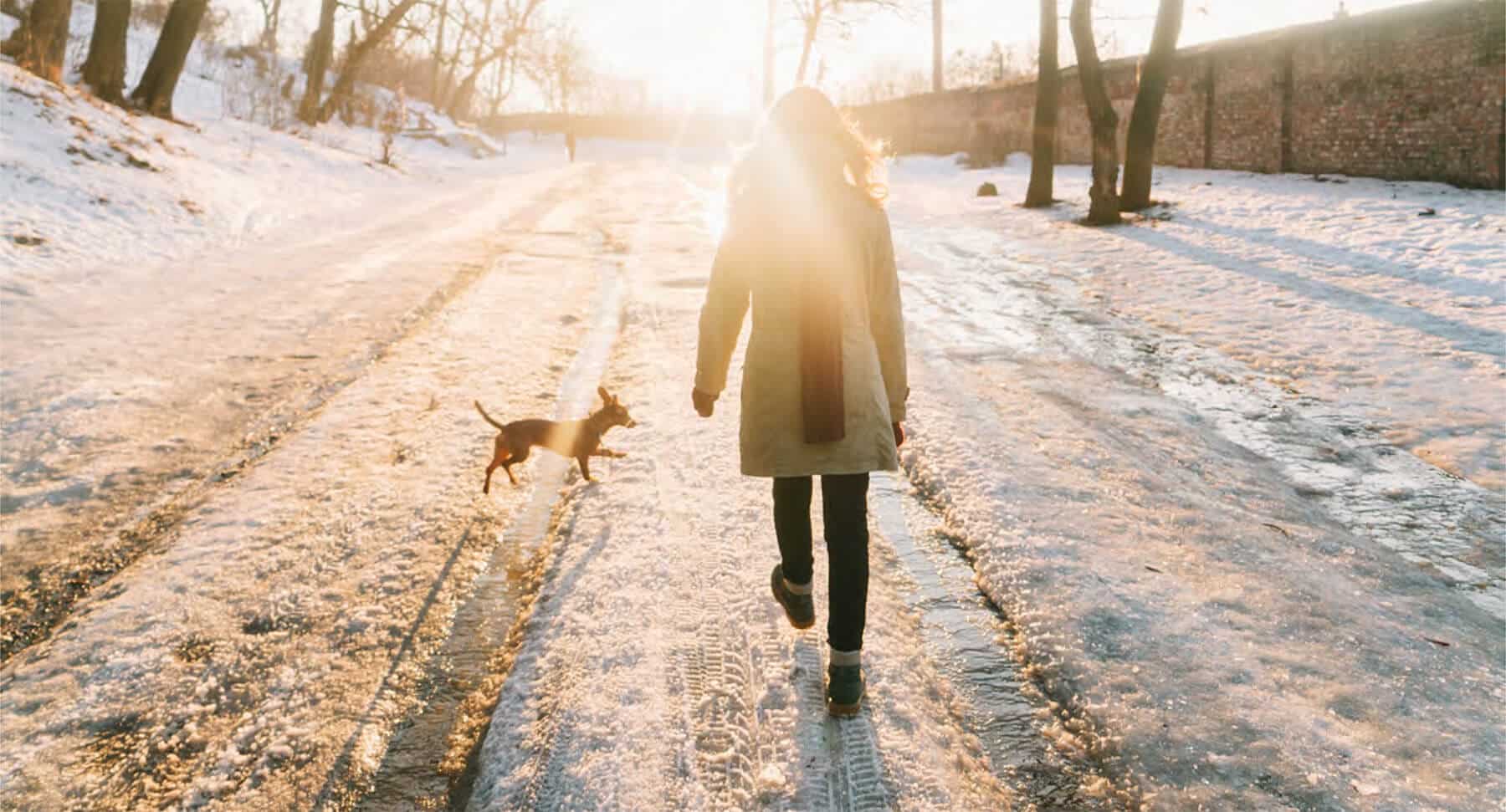When the next celebration isn’t just around the corner:
How to combat your post-holiday depression
The onset of winter typically signifies the beginning of seasonal festivities, family traditions and holidays. This year we face a season of uncertainty, a reprieve of traditions, and social and physical distancing guidelines and mandates to combat the risk of infection and spread of COVID-19. The continuing pandemic in combination with the dynamic changes in weather and a significant decrease in daylight hours can be emotionally overwhelming for many. With the approaching holidays and new year, many individuals are generally on the lookout for a bit of company to help them feel a sense of togetherness and to have some good oldfashioned fun with family, friends and colleagues. This year will be different.
As we approach those celebratory days, people can experience feelings of excitement, anticipation and this year apprehension. There’s typically a lot to do, and in spite of all of our preparations, it seems as if we’re never fully prepared. In previous years, many started planning weeks or even months in advance, as there may have been many invitations or events to attend. As the second wave of COVID-19 continues, these desired occurrences have been either scaled back or cancelled, giving way to feelings of disappointment and in some instances depression. During times of upheaval and unfamiliar routines, these feelings may be intensified or prolonged. In most instances, we take it in stride and generally try to enjoy the time we spend together, in-person or virtually, making new memories and perhaps new traditions. However, as the season draws to an end, a different set of emotions may surface for many individuals, as we realize the year, and celebrations are winding down. It’s in these moments, that post-holiday depression can set in.
It’s important to recognize that depression is one of the most common mood disorders, and it can have serious and lasting implications on an individual’s mental and physical health. Depression is a mental health disorder which makes individuals feel sad or indifferent to many events or scenarios.
The difference between sadness and depression
Sadness is a normal human emotion we all experience, often triggered by difficult, challenging, hurtful, or disappointing experiences or situations. Sadness is typically linked to a specific event or scenario; we experience sadness about something. This means when that ‘something’ changes, our emotional well-being improves and returns to our pre-event state.
Depression, on the other hand, is a mental health disorder which makes individuals feel sad or indifferent to many events or scenarios. In some instances there may be no specific trigger, situation, loss, or change that causes the depressive symptoms, just an overwhelming and perpetual state of unhappiness.
Causes
There is no single cause of depression. Rather, it usually results from a combination of factors such as an imbalance of brain chemicals, family history, thoughts or beliefs that increase the risk of depression, and traumatic or stressful life events.
As the season draws to a close
For many of us, the holiday season and the approaching New Year may raise strong emotions as we reflect upon our successes and challenges of the past year, those we anticipate to come in the New Year and those recollections of something or someone missing from this year’s traditions and festivities.
It’s at the tail end of all of this, when it’s time to clean up and put everything away that our moods can become stronger and take hold. As we begin to pack away decorations and enjoy the last of the leftovers, it’s important to realize that we’re also packing away the experiences, feelings and memories that we’ve just experienced.
Depression or sadness may set in as we return to routines and remove ourselves from the excitement of the season. As the pandemic continues, there may be no significant occasions to plan for sometime. COVID-19 also influenced how we gathered and celebrated, many of us may be reflecting on how we spent the season and with whom. We may even find ourselves reluctant to return to the everyday. Combined with the magnitude of the holiday season, it’s difficult to compare other events to the recent celebrations.
After time, we begin to reminisce about the people we saw and spoke to or perhaps dwell on those we didn’t see or connect with as we normally would have. We may reflect on the special occasions that were missed during the year or the fact that everyone is getting older – kids and adults alike. Weeks later, you may feel the financial impact when opening your bills. You may feel some regret and perhaps even frustration when you look at the financial costs.
It shouldn’t be a surprise. As much as we have enjoyed the company of our families and friends (in person or virtually) through social and physically-distanced social gatherings, many will experience the post-holiday blues. COVID-19 has changed our lives both professional and personal. The year ahead brings optimism and the hope that a return to normalcy is within reach. Here are a few small things to help yourself through the post-holiday blues.
A checklist to help you work through your post-holiday depression
Remember how great it feels to take care of yourself? Spend some time to do some self-care and pampering. Enjoy the luxury of cozying up with a book and a blanket for an evening. Take yourself out, have a coffee with a friend while adhering to physical distancing guidelines or coordinate a virtual get together. There’s no reason why you shouldn’t make time for you throughout the year. You don’t need to have an excuse.
Allow yourself time to reflect on the things you enjoyed about those recent celebrations and create a vision you can keep with you all year.
- First, think of what those were. What were your goals? What did you do? What were you feeling? What went well?
- Then, think about what was important. What can you take away from them? What did you learn about yourself?
- Finally, think about what’s next. What can you do to learn more about them? What could you improve? What could you do differently next time?
Start a new approach to your financials. Try something different by saving small amounts of money to put toward celebrations, sooner. Commit to stay on budget or only spend what you’ve been able to save. There are plenty of creative ways to do this:
- Set aside a little bit of money each day, or each week. Keep it separate from your everyday spending, so you can see it starting to add up.
- If you don’t have the cash to spare, but do participate in some loyalty programs, your everyday spending throughout the year might help you get a “reward” when you need it. Save all those points and then use them to cover the cost of some of your preparations or on a special gift for next year.
Don’t wait to celebrate. Sometimes we feel we need to mark moments according to the dates on a calendar, but there are plenty of other things we can recognize throughout the year. Acknowledge these small steps along the way.
- You might even want to consider starting a new tradition for next year’s celebration. Why not record one thing you’re grateful for each day? Then, share these at a special occasion or event next year. It will help you realize what wonderful things can happen in our lives each day of the year – even the seemingly ordinary ones.
Recognize the symptoms
Symptoms of depression may include:
- feelings of restlessness and/or despair;
- sadness throughout the day;
- having difficulty concentrating and making decisions;
- crying for no apparent reason;
- thoughts of suicide;
- feeling tired and/or have no energy; and
- loss of interest in one’s favourite activities.
It is important to recognize that depression is not a personal weakness or an inability to cope. With appropriate support and treatment you can feel better.
Here are some non-medical approaches that may improve the symptoms of depression:
Stay active. Studies have shown that 20 to 30 minutes of regular physical activity a day can help to relieve symptoms of mild to moderate depression. Physical activity releases endorphins, a powerful chemical in the brain that energizes and lifts one’s spirits.
Practice mindfulness. Being mindful of negative thoughts can help to isolate feelings, and reframe the experience in a constructive manner. Through consistent practice, individuals may recognize negative thoughts, and work to change the way the experience is perceived. Over time this will retrain the brain to think more positively.
Sleep schedule. Having a regular sleep schedule can help train the body in knowing when it is time to rest and re-energize. Many people with depression often have symptoms of insomnia, which can impact someone’s ability to fall asleep and often worsens depressive symptoms. Staying active and building a sleep routine may help with falling asleep, allowing one to better prepare mentally and physically for tomorrow’s challenges.
Eat better. Eating foods that are high in vitamins and minerals are known to help regulate serotonin levels which may help to reduce symptoms of depression and mood swings. Here is a list of vitamin rich foods to try:
- B12 and folate – lentils, almonds, spinach, chicken, fish
- Omega-3 fatty acids – haddock, salmon, nut oils, algae, cod
- Selenium – cod, brazil nuts, walnuts, poultry
- Vitamin D – bread, milk, breakfast cereals
If you or someone you know may be facing extended periods of depression, seek out professional support from a qualified healthcare professional. They will be able to provide you with a range of options from therapies to medications, or lifestyle approaches to alleviate symptoms of chronic depression.
*Always consult with a physician or qualified health care professional to identify the right course of treatment for depression.














